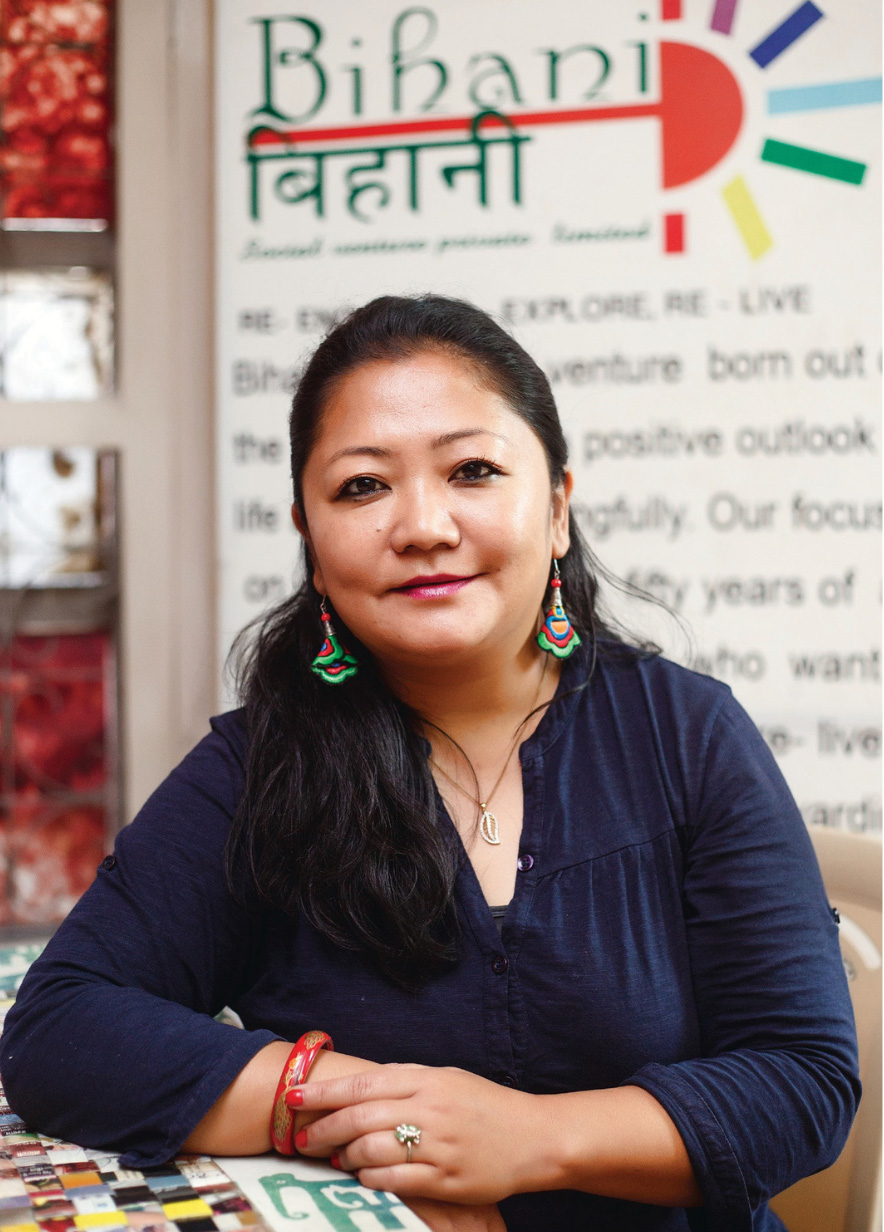
SANTOSHI RANA is the Founder & Director of Siddhartha Art Gallery and Siddhartha Arts Foundation as well as Kathmandu International Art Festival. Thapa is also the Co-founder and Director of Kathmandu Contemporary Arts Centre. She is a contributing author for the Pakistani art journal, Nukta and is the publisher of three volumes of poetry by Nepali poets.
In her vibrant 32 year career, Thapa has been felicitated and honoured with several awards, and is celebrated by the arts community in Nepal and abroad. She serves as a board member of the Patan Museum Development Committee. She is also a board member of the Saraf Foundation and served briefly as Chair of Himal South Asia. Thapa is planning to establish a museum of contemporary art post Kathmandu Triennale 2020. Moreover, writing a book about modern art in Nepal is in her to-do list.
In this edition of B360, she shares with Ankita Jain the five pillars in her life that helped her become who she is today.
The Friendship of Shashikala Tiwari
Art is something that I have always loved and I always aspired to be an artist. Naturally, I studied art. But when I returned to Nepal in 1983 after living abroad for 22 years, I witnessed the state of the galleries and how art shows were managed. Hence, I decided to be involved in the management of arts. I believed I had very good managerial skills—not that I was trained to be a manager. This realisation led me to seek for an artist to collaborate with.
Shashikala Tiwari is one of the most important people in my life as it was she who introduced me to the art world. Not having lived here, I didn’t know anyone. Art galleries are run on trust. When someone who has never lived here suddenly comes and says, “I want to run a gallery. I want your paintings”, this is not acceptable. It was the friendship that Tiwari had forged with Nepali artists that made them accept me and understand what I wanted to do.
Family Support
Not many women pursued a profession in the 80s. The two sides of the family (my parents and in-laws) probably could not fathom my sincerity towards work at that time, they wanted to support me nevertheless. There are many homes where women don’t get that kind of freedom.
While I was managing the Kathmandu International Art Festival where over 100 artists participated, I had children at home to be taken care of. Fortunately, my mother-in-law, sister-in-law and the entire family was there to take care of them while I was away chasing my dreams. My family believed in me and that was something really important to me at the early stages of my career.
Long-distance Marriage
My husband worked for the UN for 26 odd years and because of the nature of his work, he was always in places where there was a disaster. I stayed in Nepal and he worked there and we shuttled back and forth. We often met in a third country. Ours was sort of “not together” life but still “making it together”. It was a long-distance marriage. People always questioned, “Don’t you feel like you are losing out? Don’t you miss your husband?” Well, I did miss him. But I always saw this as the glass that was half full than half empty. Those 26 years I had my own time and I was able to write. I had very clear thoughts, I was able to do my work and there were no other commitments. For the social gatherings, I always had an excuse that I am alone and I can’t come. During those years, I focused exclusively on art, literature, music and the things I really loved. Since 2012, my husband is back with the family. We are doing many things as a family and sometimes it is hard to juggle between family and work. But I would say devoting those years to arts probably catapulted me to where I am today.
Establishment of Siddhartha Art Foundation
Some people get very comfortable doing what they do. I was running a gallery and it was doing well but then it was becoming too much of the same. Art scene in Nepal is a small market. In fact, Kathmandu is the only market. The galleries and the pool of artists are the same. It was high time that things were stirred in the art scene in Nepal. Hence, I started a residency, Kathmandu Contemporary Art Centre in 2010. The Centre sponsors up to four Nepali artists a year on a six-month scholarship programme. In 2011, we registered Siddhartha Art Foundation. We still have Siddhartha Art Gallery which has a 32-year-old history, over 500 exhibitions. Whatever money is made from the gallery goes into the foundation which is a non-profit organisation and the fund helps to run programs.
In 2009, I organised the first Kathmandu International Art Festival which revolved around the socio-political theme “Status of Women”. I wanted artists to be a medium for change because no one wants to read a 100-page report on the status of women. The idea was to get artists examine the status of women. This is a country where women are treated as goddesses and it is also the same country where woman are kept in Chhaupadi sheds. The art festival invited local and international artists to reflect on the status of women.
In 2012, we picked environment as the festival issue of the 2nd Kathmandu International Art Festival. Both the editions received an overwhelming response. The festival not only involved the artists and the art critics but also engaged a broader audience and got the community involved. I started putting art in community spaces in Nag Bahal and all the Bahals of Patan. For 2012 edition, we had 12 venues and the city became a gallery.
And in 2017, there were 19 venues. After the earthquake and blockade, I changed the festival format into a triennale. It was still a three-year event but the name changed from a festival to a triennale. The sole reason being the Triennale Foundation in Italy Publicises all the art biennales and triennales around the world.
Kathmandu Triennale puts Nepal on the global art map and brings international artists together. This platform helps artists network, exchange and flourish. And for me, my interest lies in the development of the artists. It’s a robust art scene and art market.
To Adapt with Change
I believe it is really important to find what is relevant and to adapt with change. I am always looking for new artists and new faces. I am looking at artists as an archeologist digging into their past, finding out about their art. One thing about this country is that it is blessed with ethnic diversity. I think it’s time that artists begin to examine identity and its politics. It’s important to be involved in the now and understand the need of the hour.
The first 10-15 years of my career, I have devoted to the people whom I consider to be the master artists of the country like the late Tej Bahadur Chitrakar, Amar Chitrakar, Karna Narsingh Rana, Uttam Nepali, Shashi Bikram Shah, Shashikala Tiwari and Birendra Pratap Singh. These are the artists whose company I enjoyed, whose friendship and trust I received.
I also attend all the graduation shows of Kathmandu University Department of Fine Arts, Sirjana College of Fine Art, Lalitkala Campus, etc. I am always on the lookout for young people who have a promising future. And if s/he needs financial support, I make sure that they receive a scholarship or a fund to advance their work. It is also important not to treat your artists as just money making machines but to treat them as people who have amazing visions. I focus on how I can facilitate them and bring the story of their vision into the gallery space. And I enjoy this process.


